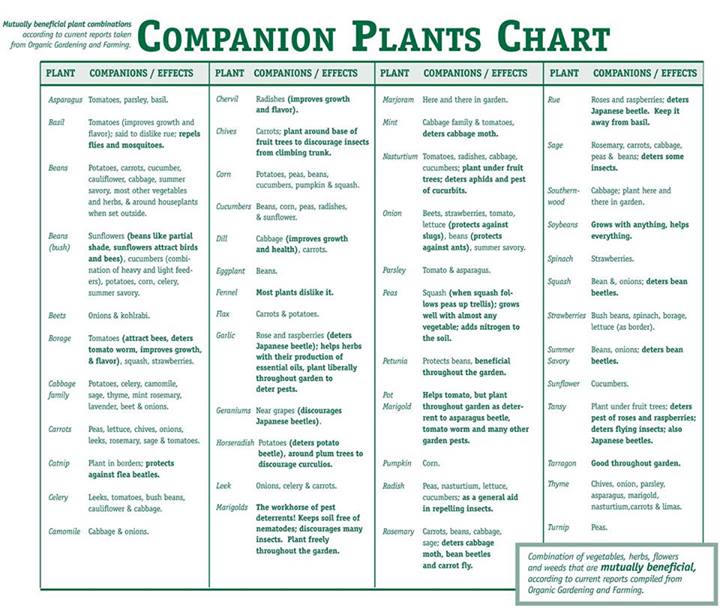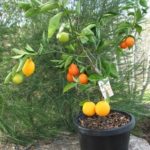Growing Your Vegetables Organically
If you would like to grow your Vegetables Organically, this information will help you. One of the things you need to do is to select plants for your garden that will help control insect pests. Certain plants either invite beneficial insects or repel harmful insects. Beneficial insects’ prey on pests that cause damage in the garden. Ladybugs and praying mantis are good examples of beneficial bugs.
Using plants for Pest Control not only cuts down on your workload, but it also reduces or eliminates the number of insecticides that you use in your garden. And fewer insecticides mean more good bugs, which in turn means more help in controlling bad bugs. It’s called Companion Planting and is important that you experiment to find out what works best for your situation. With this thought in mind, it also helps to choose plants that are native to your area. This way beneficial insects will already know what to look for. (Get your 10 FREE Heirloom Herb Seed pkg, that includes several of the companion plants listed in article, with 60 Variety Heirloom Seed pkg from THE SEED GUY-listed below)
ARTEMISIA – This plant produces a strong antiseptic, although not unpleasant aroma that repels most insects. Planted as a border, it can also deter small animals like Rabbits and moles.
BASIL -The oils in Basil are said to repel thrips, flies and mosquitoes. I plant basil alongside my tomatoes for larger,
tastier tomatoes.
BEE BALM- I love this plant because it attracts bees to my garden. It is another plant that you can grow with your Tomatoes.
BORAGE – This plant is a real gem in the garden. It repels Tomato horn worms and cabbage worms and attracts beneficial bees and wasps. Borage also adds trace elements to the soil.
CATNIP – This plant repels just about everything. You can use it to keep away flea beetles, aphids, Japanese beetles, squash bugs, ants, and weevils.
CHIVES – Chives are one of my favorite herbs. You can plant Chives to repel Japanese beetles and carrot rust flies. It has also been said that Chives will help prevent scab when planted among apple trees.
CHRYSANTHEMUMS – When I do use an insecticide, I use one made from chrysanthemums called Pyrethrum. This all-natural pesticide can help control things like roaches, ticks, silverfish, lice, fleas, bedbugs, and I like to use it to control ants in certain parts of the garden. In the garden white flowering chrysanthemums are said to drive away Japanese beetles and C. Coccineum, commonly known as Painted Daisy, kills root nematodes.
DAHLIAS – Dahlias repel nematodes and the blooms are great for adding some color to flower borders and fresh arrangements.
DILL – There is always a place for this plant in my garden. Dill is best planted with Cucumbers and Onions varieties. During the cool season It can also be planted with Lettuce. Dill attracts Hoverflies and predatory wasps, and its foliage is used as food by swallowtail butterfly caterpillars. Tomato horn worms are also attracted to Dill, so if you plant it at a distance, you can help draw these destructive insects away from your Tomatoes. Dill repels aphids and spider mites. Sprinkling Dill leaves on squash plants will also repel squash bugs.
GARLIC – In addition to its great taste and health benefits, Garlic planted near roses repels aphids. It also deters codling moths, Japanese beetles, root maggots, snails, and carrot root fly. When planted alongside Onions, they also deter moles and mice.
HYSSOP – This is another one of my favorite plants. Hyssop is great for attracting honeybees to the garden.
LAVENDER – Lavender is a favorite among many beneficial insects and also repels fleas and moths.
MARIGOLDS – The Marigold is probably the most well-known plant for repelling insects. French marigolds repel Whiteflies and kill bad nematodes. Mexican marigolds are said to offend a host of destructive insects and wild rabbits as well. If you choose marigolds for your garden they must be scented to work as a repellant. And while this plant drives away many bad bugs, it also attracts spider mites and snails–which are good.
NASTURTIUMS- Planting Nasturtiums with Tomatoes and Cucumbers is a way to fight off wooly aphids, white flies, Squash
bugs, and Cucumber beetles. The flowers, especially the yellow blooming varieties, act as a trap for aphids.
PETUNIAS – They are great to look at, and repel Asparagus beetles, leaf hoppers, a range of aphids, Tomato worms, and a good many other pests.
ROSEMARY-Deters Cabbage moth, Bean beetles and the Carrot fly
SUNFLOWERS – I use Sunflowers as a way to draw aphids away from my other plants. Ants move their colonies onto Sunflowers. The Sunflowers are tough enough that they suffer no damage.
THYME-Deters Cabbage worm
Source Danny Look
For all the non-GMO seeds you need for your organic garden see the Seed Guy at the link below
 This is an aggregated site. Please be aware some of the sites we link to could have pop ups. We have no control over them. However, we will never link you to a site that requires you to make any purchase to view the blog.
This is an aggregated site. Please be aware some of the sites we link to could have pop ups. We have no control over them. However, we will never link you to a site that requires you to make any purchase to view the blog.
Please read our disclaimer. We provide you with information from various sites all over the world. The author’s expressed opinion isn’t necessarily that of The Prepared Page or its staff. Our intent is to bring you the information. Use your and your own best judgment when using any information contained within the blogs.
While you’re here check out some of the other posts you may find them interesting!!!
Some posts may contain affiliate links.








